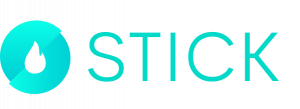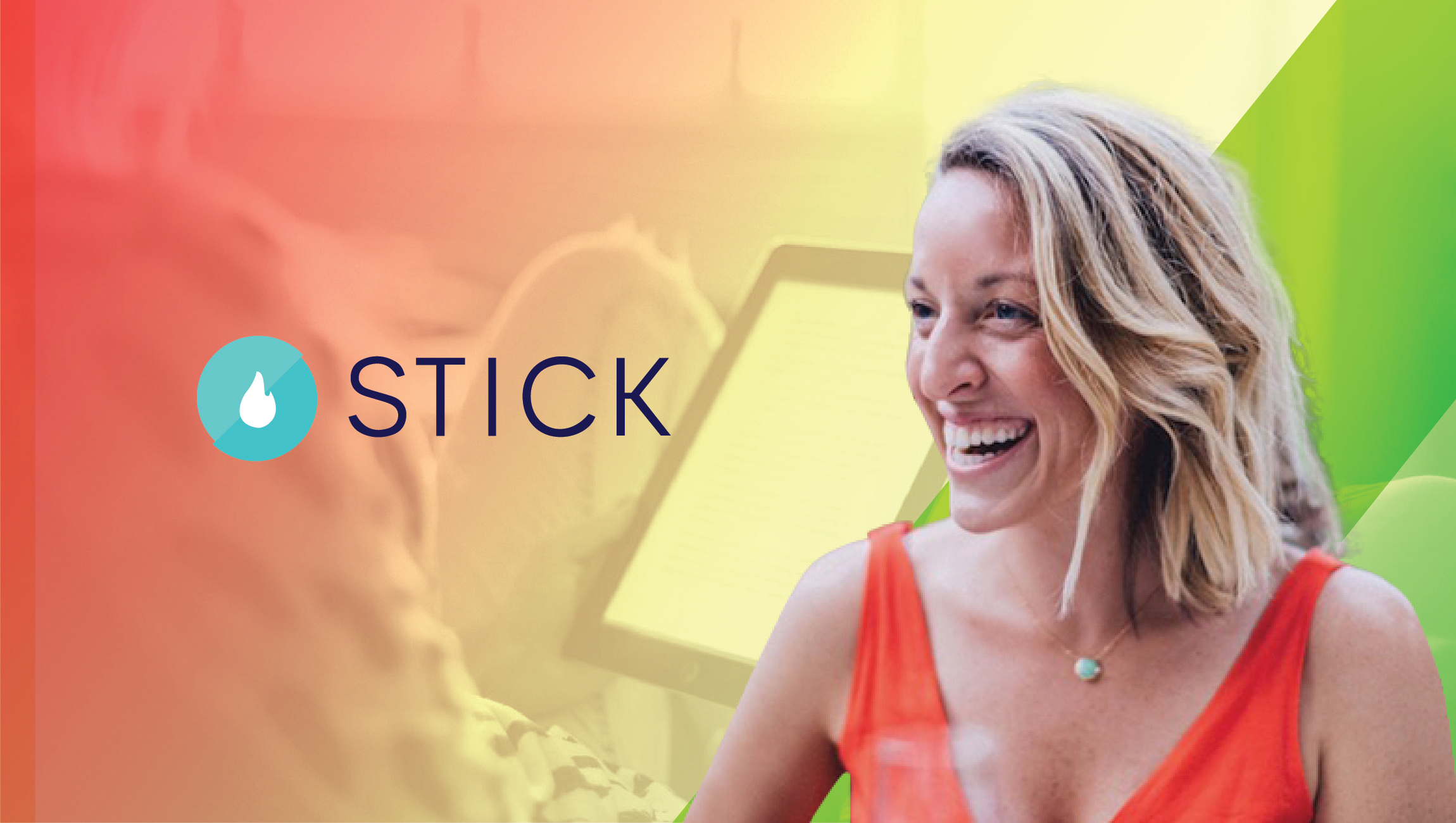[/vc_wp_text]
Tell us about your role and how you got here? What galvanized you to start Stick.ai?
Communication is the world’s single biggest challenge today. We know visual communication is more effective, and yet we can’t do it because the vast majority of us aren’t designers. Our appetite to consume visual content has skyrocketed, yet our ability to create visuals hasn’t changed.
I wanted to change that. As a Bain consultant and IDEO.org designer, I had built up a repeatable process for turning ideas into visuals. Teaching it at the Stanford d.school, I realized that we could couple this process with recent breakthroughs in NLP and Machine Learning to turn it into a program.
I started Stick to put myself out of a job, so now anyone can create simple visuals on their own.
How are the sales technologies different today from when you first started?
There are so many more of them! When I started out, there were ~150 players. Now there are 5,000. Think about that. It means that without marketing, we each went from having 0.7% to less than 0.02% of mindshare.
While the tools are more powerful, they are also so much harder to find. Welcome to the Attention Economy. That’s why you’re seeing the rise of personalized, visual marketing today. Without it, you blend into the noise.
Who is your ‘Ideal Customer’? What platforms are best suited to leverage Stick.ai as a primary engagement tool?
We built Stick for marketers who need to build better sales content quickly, and for sales teams who need to customize that content to their prospects.
We see the ideal teams are being those who are between 5 and 50, when design resources are tight, but the need to earn prospect attention is at its highest. We want to level the playing field so these smaller innovative companies can break through, and we can grow together.
In terms of platform, Stick fits in wherever you’re talking to your customers. Lots of tech companies rely on demos to close the sale, but buying is becoming more and more complex with 6+ people involved in each deal these days, on average. That means you need content at every step of the way, so that your champion can turn around and sell into their boss, or drive adoption in their team.
We’re expanding integrations to solve this, so you can use Stick as a presentation tool for your Zoom call, or as a visual embed into your email, or as a dynamic follow-up link, or even as an image to make your LinkedIn status update more shareable.
Our goal is to build a product that fits seamlessly into workflows so we can visualize content anywhere to get your message out there.
Would AI become the ubiquitous element of most business operations by 2020?
Absolutely, but that doesn’t mean robots are taking our jobs. Stick’s founding DNA comes from my experience teaching art, so we deeply value human creativity, continuous learning, and the role technology can play to accelerate that.
Our strategy, then, is augmentation, rather than automation. We are working to build a tool to help business people do their jobs better by giving them access to design, not to replace designers. It’s not about automating it away, but rather, automating the mindless part to freeing us up to think about what actually matters.
If anything, the rise of AI-powered products forces us to double down on the human skills: communication, relationship building, storytelling. It enables us up to be more creative, as a whole, and I think that’s the ultimate goal.
What is the current state of AI-based marketing engagement in 2018? How much of that state is influenced by the maturity of data science and customer experience platforms?
The trend that most excites me is the real-time personalization. In this market, buyers are more than halfway through the process before contacting sales at all, so they’ve already read your stock content. The next wave we see will be delivering buying experiences more personalized than your Facebook feed. Content will continue to be the core of that.
We’ve got a ways to go, but that’s where we’re headed.
Which startups in martech and adtech industries are you keenly following?
We’re closely following startups who aren’t just building products, but are building a movement around their mission in the Attention Economy:
For example, Drift has launched this conversational marketing movement that has gained serious momentum quickly. The deeper message – that people want to be treated like people, not leads – is an indicator of where the industry is going. Their company’s “Everything is Marketing” approach is genius, as well. In this new world, every single person in your company is a marketer. Make sure your strategy reflects that.
Another example is Nudge.ai, whose #HoldtheHustle movement shows how AI can help us focus on the more human elements of sales and marketing, rather than playing the pure numbers game.
There are so many others, and I find I learn something new from every single company we meet.
What marketing and sales automation tools do you use?
We rely heavily on Hubspot, Salesforce, and Drift. At this point, our strategy focused on inbound driven by content marketing, so these tools work wonders for us.
We’re also big fans of Chorus.ai and Zoom to help us have better, more visual conversations with our customers along the way.
How do you prepare for an AI-centric ecosystem as a business leader?
First, I read to keep learning, always. This landscape is changing so rapidly that you can’t stop even for a second. It’s energizing to see the pace of change.
Second, double down on the softer skills – especially communication – and then use data to get even better. Aside from the hype, I view this “rise of AI” as an opportunity for us to do more meaningful, creative work in our day to day. Thrilled to have Stick be a part of that.
What apps/software/tools can’t you live without?
Slack, MixMax, and Stick. Without these communication tools, we’d be all over the place.
What’s your smartest work related shortcut or productivity hack?
Creating Linkedin content daily has been a game changer for our business – from recruiting, to selling, to fundraising. It has been incredible the doors it has opened. And yet, it all comes down to a daily 15-minute calendar hold, where I create a short piece of content daily. By building in the habit, it has become a regular part of my day rather than a drain of time or energy.
What are you currently reading?
I spend Saturdays reading the books I ordered on Amazon that week. This Saturday, I finished up Never Split the Difference and Extreme Ownership and started on Designing the Obvious.
I like balancing leadership, sales, and design in my reading list. The combination forces me to think about actually implementing the ideas rather than simply exploring.
What’s the best advice you’ve ever received?
Things worth doing are hard. That’s kind of the point. Persistence is more than half the battle.
Tag the one person in the industry whose answers to these questions you would love to read:
David Cancel of Drift. We want to hear more about how you’ve made marketing core to everyone in your company and sparked a movement along the way.
Thank you Alli! That was fun and hope to see you back on MarTech Series soon.
Alli McKee is the CEO and Founder of Stick.ai, a content visualization tool for B2B Marketing teams to build better sales presentations in 95% less time.

Today, Design is a service. In the future, it will be embedded into everything you write, show, and say. We’re building tools that take us there faster, and we’re starting with a visual presentation generator for B2B sales and marketing teams.
The MTS Martech Interview Series is a fun Q&A style chat which we really enjoy doing with martech leaders. With inspiration from Lifehacker’s How I work interviews, the MarTech Series Interviews follows a two part format On Marketing Technology, and This Is How I Work. The format was chosen because when we decided to start an interview series with the biggest and brightest minds in martech – we wanted to get insight into two areas … one – their ideas on marketing tech and two – insights into the philosophy and methods that make these leaders tick.











